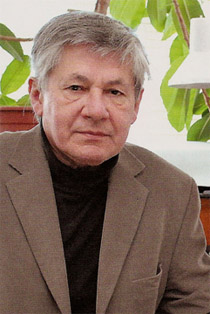
Mail ČKA 2008 in memory of Miroslav Bašek
Source
Markéta Pražanová, tisková mluvčí České komory architektů
Markéta Pražanová, tisková mluvčí České komory architektů
Publisher
Tisková zpráva
18.11.2008 19:20
Tisková zpráva
18.11.2008 19:20
 |
Since 2000, the Honor of the Czech Chamber of Architects has been awarded annually to a significant personality in the field, whose work and moral credit have made a lasting impact on the modern history of Czech architecture. A five-member expert jury composed of leading Czech architects and theorists (Zdeněk Fránek, Rostislav Koryčánek - chair, Jan Línek, Miroslav Masák, Petr Všetečka) evaluated this year fifteen nominated personalities, from which Jindřich Malátek, Emil Přikryl, and Miroslav Baše made it to the final selection. Miroslav Baše passed away in February this year at the age of 75. According to the jury's opinion, the laureate undoubtedly met all the conditions of the ČKA Honor statute.
Professor Miroslav Baše studied at the Faculty of Architecture at the Czech Technical University in Prague, later receiving a scholarship for postgraduate studies at Wayne State University in Detroit. He worked in several design offices and from 1968 he worked at the State Institute for the Reconstruction of Historical Towns and Buildings (SÚRPMO) in Prague, where since October 1988 he led the project division for urban studies and surveys. His more than twenty years at this institute directed his activities towards heritage conservation and urban planning. He also engaged in the urbanism of rural settlements, initiated a student competition "Building for the Countryside," and was, among other things, the vice-chairman of the Association for the Renewal of the Countryside.
He developed many urban plans, e.g., for Spišská Nová Ves, Mníšek pod Brdy, and the Petrská quarter in Prague, as well as several urban programs, including a rural renewal program for the Research Institute of Building and Architecture. He also participated in the regional development plan for the UN for Karachi, Pakistan, and Colombo, Sri Lanka, and worked on the concept for the center of Kuwait, where he spent three years. In terms of heritage conservation, notable projects include the reconstruction of the House U zlaté lilie in Prague, the regeneration of the Gothic Hrádek near Litoměřice, and the engineering survey of the historical center of Tábor.
However, the most important contributions include the Spatial Prognosis of the Prague Heritage Reserve (1980) and a study on the historical core of Prague for the European Union, as well as other works related to the development of central Prague.
He organized numerous professional seminars both at home and abroad, gave lectures, and published professional texts not only in Czech media. In 1991, he was one of the main organizers and participants of the significant international conference "PRAGUE - the Future of Historical Cities."
He served as a teacher at the FA CTU in Prague, becoming the head of the urbanism institute in 1993, and in April 2001 was appointed a full professor by the President of the Republic. From 2003 to 2006, he was entrusted with the role of vice-dean for science and research. He was a member of the National Committee ICOMOS-UNESCO for four years. He closely collaborated with the Czech Chamber of Architects and was a member of its working group on heritage conservation.
According to the statement of the expert jury, "Miroslav Baše was a non-conformist personality, a man of clear opinions and strong positions, who transcended his insights and interests into the fields of architecture and urbanism, and his belief in the superiority of public matters over personal interests led him to a lasting social engagement. This was evident not only in both critical periods of our contemporary history but also during the passive time of normalization in the seventies and eighties."
The English translation is powered by AI tool. Switch to Czech to view the original text source.
1 comment
add comment
Subject
Author
Date
Cena za památkovou péči
Jan Sommer (hles z hnojiste)
18.11.08 09:34
show all comments
Related articles
0
18.06.2025 | Mail ČKA 2025 in memory of Jan Štípek
0
10.06.2019 | The Honor of the Czech Chamber of Architects will be awarded to Jiří Suchomel and Ivar Otruba
0
17.09.2018 | 85 years ago, architect Miroslav Baše was born
0
01.12.2015 | Post of ČKA 2014: Věra Machoninová
0
18.11.2014 | The ČKA award for the year 2012 was received by David Kopecký in memoriam
0
08.07.2012 | Call for Nominations for the ČKA Honor 2012











